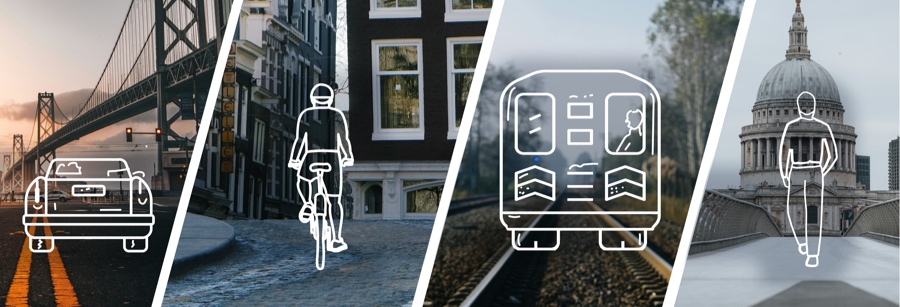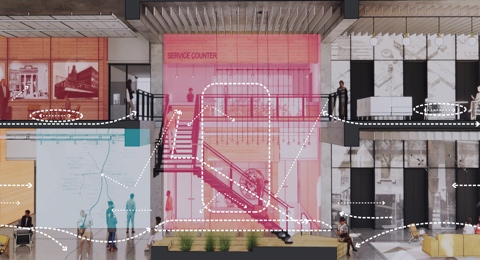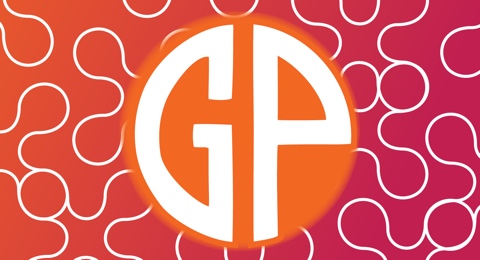What's in your Commute?

It's about More than Movement
We love to complain about our commute, but do we secretly love our commute? If we don’t, maybe we should—and maybe we can get there together. Read more in On Our Minds.
On our minds
Our collective cadence has changed in the past few years, both spatially and temporally. Gone are 5 days of the work-week rolling out at the same tempo and cadence, now each day and week is different. While we head to the office physically, many of us are still retaining our temporal flexibility. So, what does this mean for the oft-maligned commute?
At PLASTARC, we are big fans of anything that promotes employee autonomy, including hybrid and remote work—but we also think the overall concept of commuting has gotten a bad rap. Our own research, and that of many others, shows the commute is one of the top reasons for not wanting to head to the office. Sure, commuting four hours a day doesn’t do anyone any favors, but data suggests that commuting may actually boost our physical and mental health.
In part, this is because when we commute, we exercise more—even if we drive or take the train. We're also likely to be outside more. A 2023 study indicates that “returning to work” increased exercise 126-percent among those who exercised the least during the height of the pandemic. Maybe these workers are now biking or walking to work, or maybe they’re hitting the gym near work, since they’ve already left their neighborhood for the day.
Meanwhile, cycling reduces the rate of death from cardiovascular disease by 46-percent and the incidents of cancer by 41-percent, according to a five year study of 250,000 British commuters who traveled an average of 30 miles a week on two wheels. Per a 2012 study, moving in the morning - even if it’s just a short walk to the subway - increases your activity for the next 24 hours. It also spikes alertness, by increasing oxygen and cortisol. And spending a bit of time outside first thing in the morning delivers a shot of Vitamin D to your system, which strengthens immunity and keeps energy levels stable.
Commuting can be as social or as solo as you need it to be. Carpooling with colleagues or chatting with fellow commuters on public transportation offers some of those casual social interactions that are critical to our overall well-being. (A few months ago, we dedicated a whole newsletter to this).
Just as importantly, commuting also offers “me” time. Think back to the last time you had more than five minutes alone, someplace other than the shower. Were you on your bike or in your car? Were you strolling a city block? Maybe you were on a bus or train, surrounded by others but comfortably ensconced in the anonymity of your book or the earbuds feeding your favorite tunes or podcast to your brain?
Some days, commuting is the only time we get for ourselves and away from a screen. Whether we’re purposefully practicing a mindful activity (meditating or praying) or passively practicing (daydreaming, studying the landscape), our brains need this time away from chores, kids and partners.
Like so much else about our work lives, our approach to commuting has become more driven by our individual, or family, needs and schedule. As with many aspects of work, there is an opportunity to capture a best of both worlds approach. Maybe now we skip rush hour and wait till late-morning to come to the office. Maybe we only come in twice a week, and stay in the city after work to meet a friend for happy hour to take a spin or yoga class. Maybe we come in early and leave in time for school pick-up. It's time to design a commute that works for you.
“Make space” isn’t just a yoga mantra or an important component to keeping our muscles limber and our joints fluid; it also keeps our creativity flowing and our perspective positive. Commuting gives us this space—to transition, to mentally shift from work to other things. If you are working from home long-term, consider a walk around the block at the start and end of each day, or another healthy ritual of your own. Remember back in the aughts, when you had to manually “defrag” your computer? Think of commuting as defragging your mind. As with everything, there's a sweet spot. Don’t skip the commute—but don’t skimp on work/life balance either.
From the archives
In late springs past, we reprioritized over breakfast and optimistically considered workplace shifts and the future of work. We wrote about leveraging data to create better workplaces and taking lessons from the hospitality industry on how to make hybrid work work.Four springs ago, we were thinking about how to safely return to work in a way that incorporated the outdoors and honors the “breather” our planet was finally getting. Actually, we were already talking about outdoor design the spring before anyone ever heard of COVID.
So on that note, go on a hike. Hop on a bike. Liven up your commute by hiking or biking to work. Or, on your drive or ride to work, listen to some tunes that get you daydreaming about the next mountain you’ll climb.
In Case You Missed It
The headlines are busy these days. We’ve made a list, in case you missed a few.

Optimizing City Hall
Check out how PLASTARC supported the City of McKinney, TX in rethinking community service and city operations for their own City Hall, including an adaptive reuse design solution.

If You Build It
The results are in for LEGO's annual competition of crowd-sourced ideas for new building sets. Now, the question is, which will actually be produced? Stay tuned!

Zero Sum Game
In math, you can break the rules, but you can’t defy logic. This numbers-first episode of Radiolab looks at math historically and existentially. Cue this up, and nerd out!

Designer Gaetano Pesce Dies
Gaetano Pesce created furniture, art and occasionally buildings, was showcased 17 times at MOMA, and taught around the world. He died on April 3, at age 84.
Looking Ahead
Planning your summer? Factor in these sizzlin’ events.








